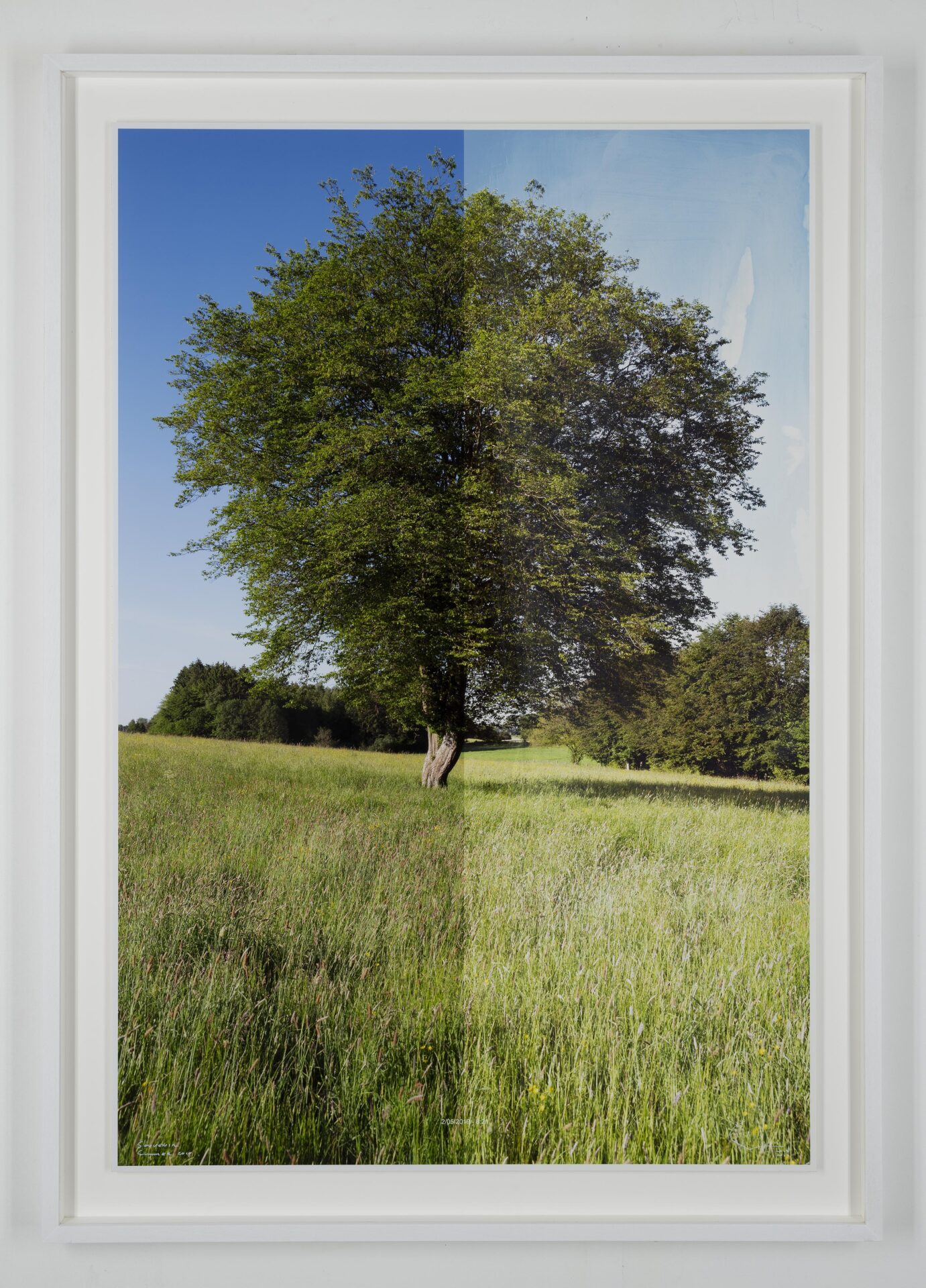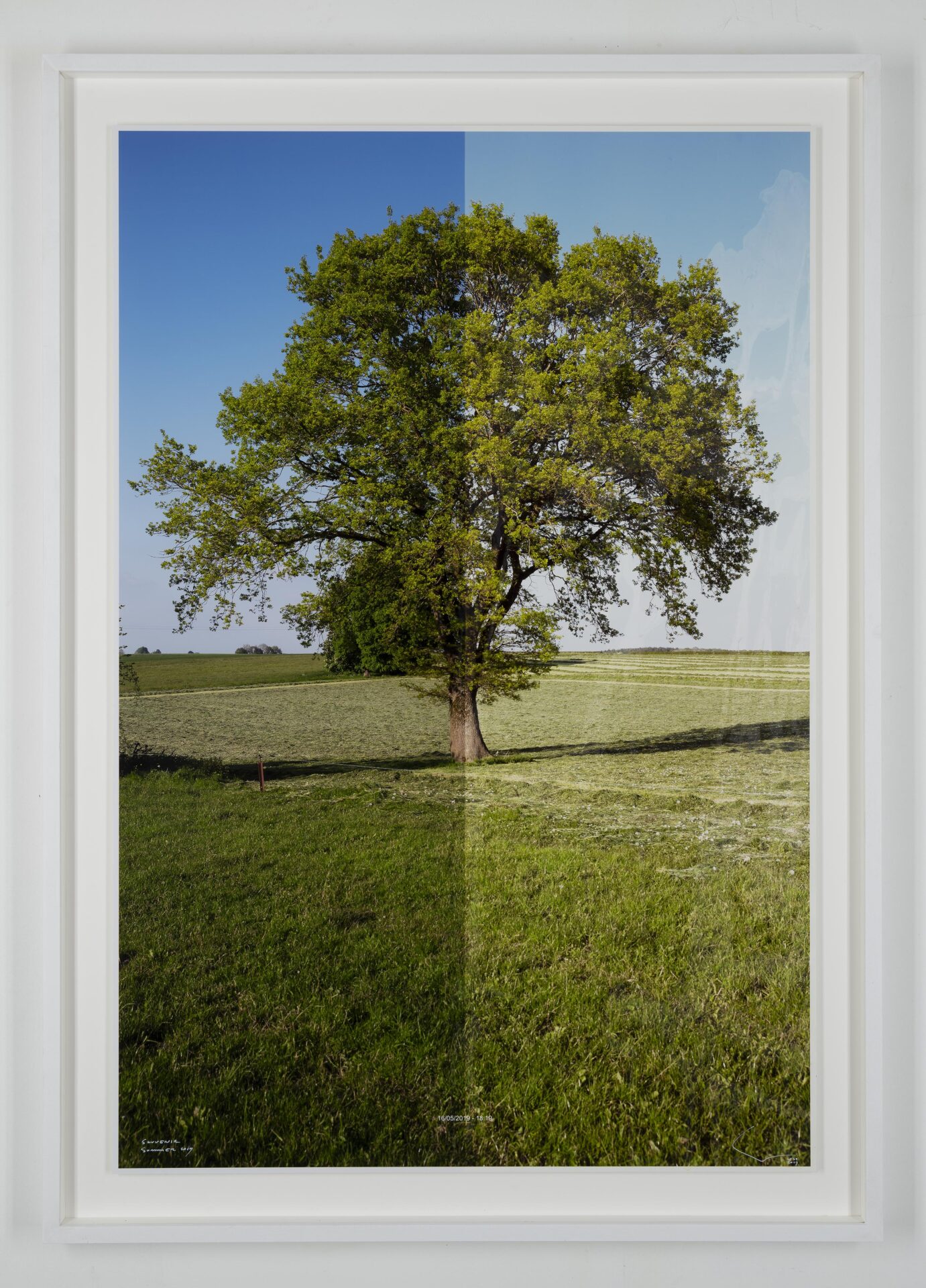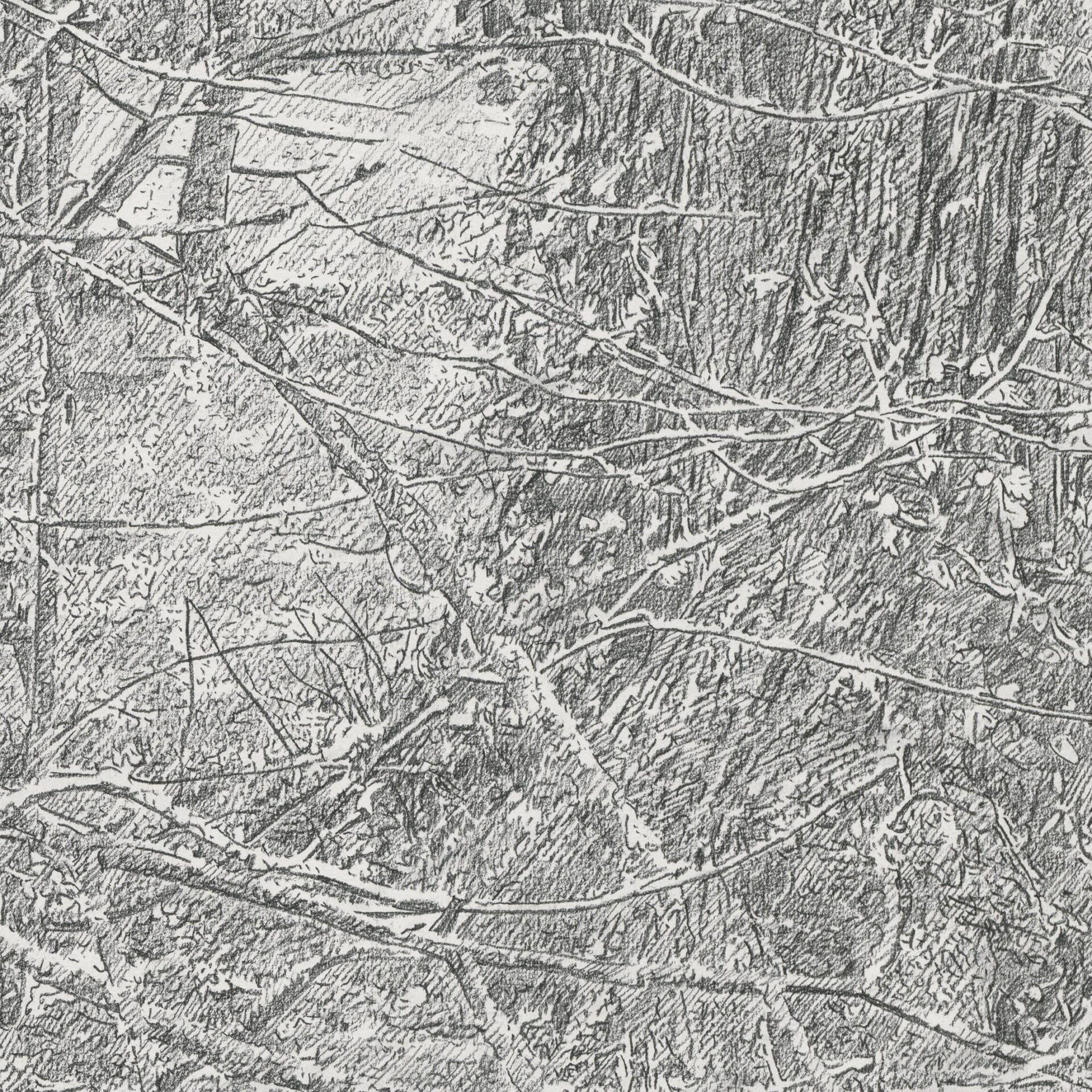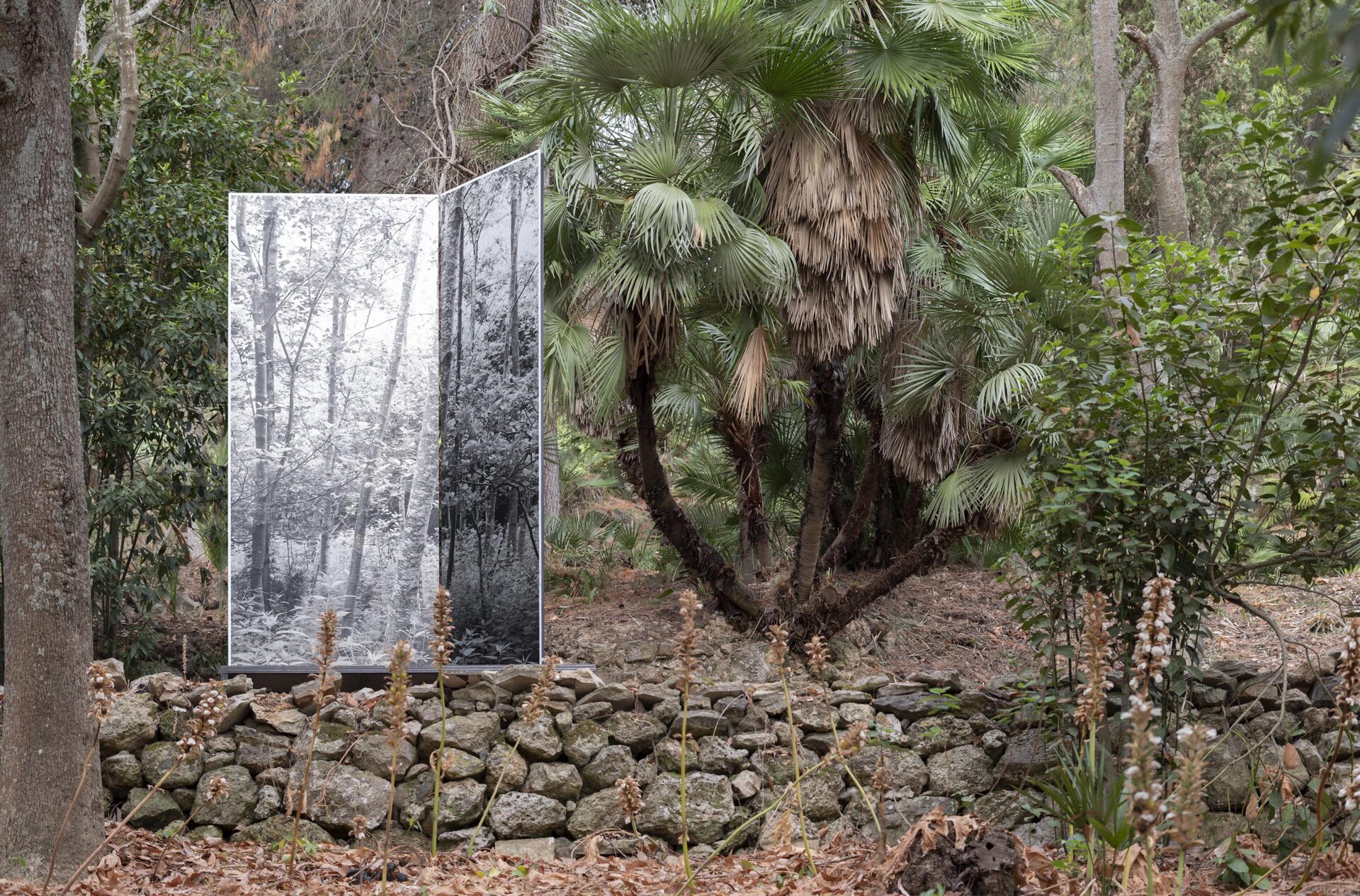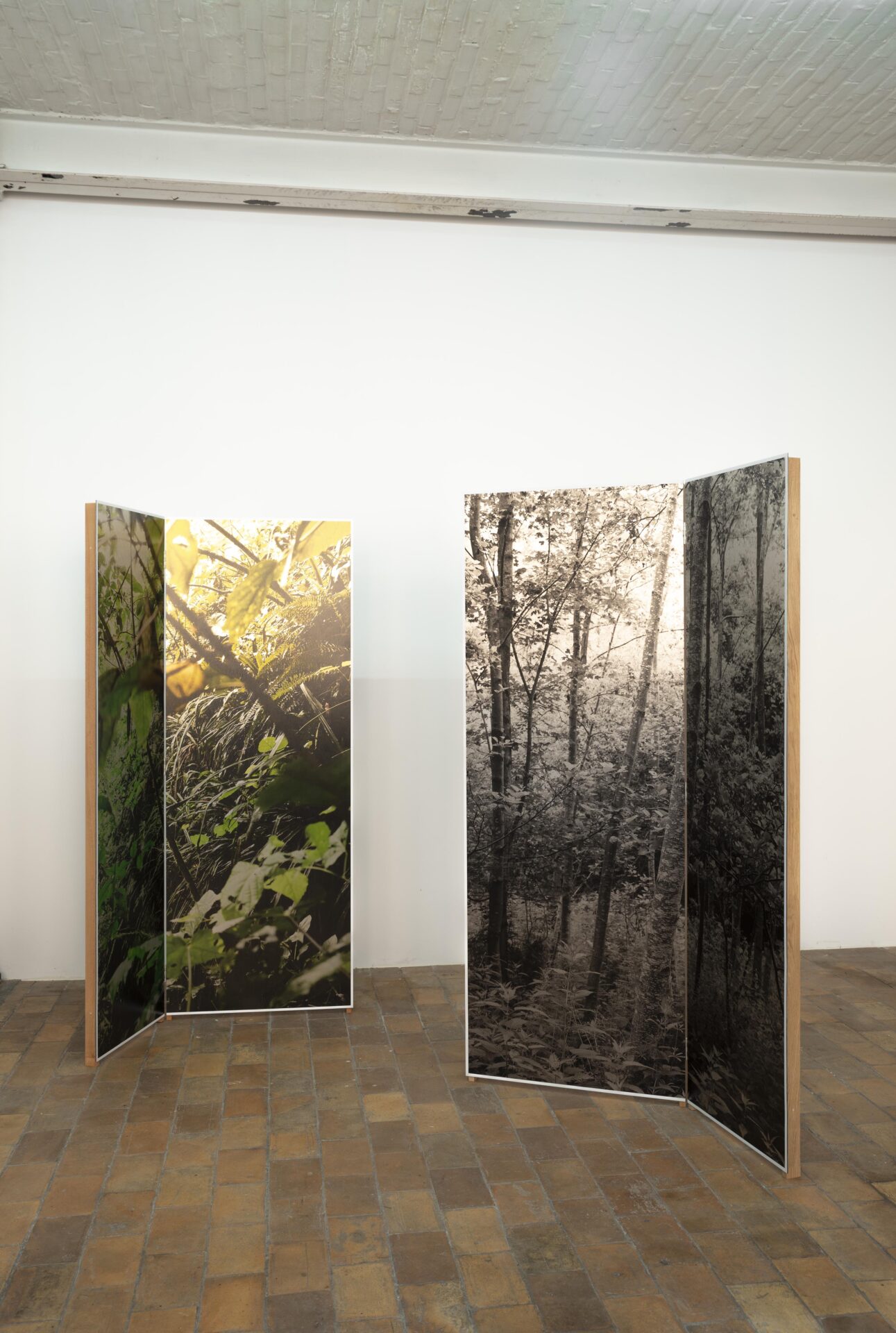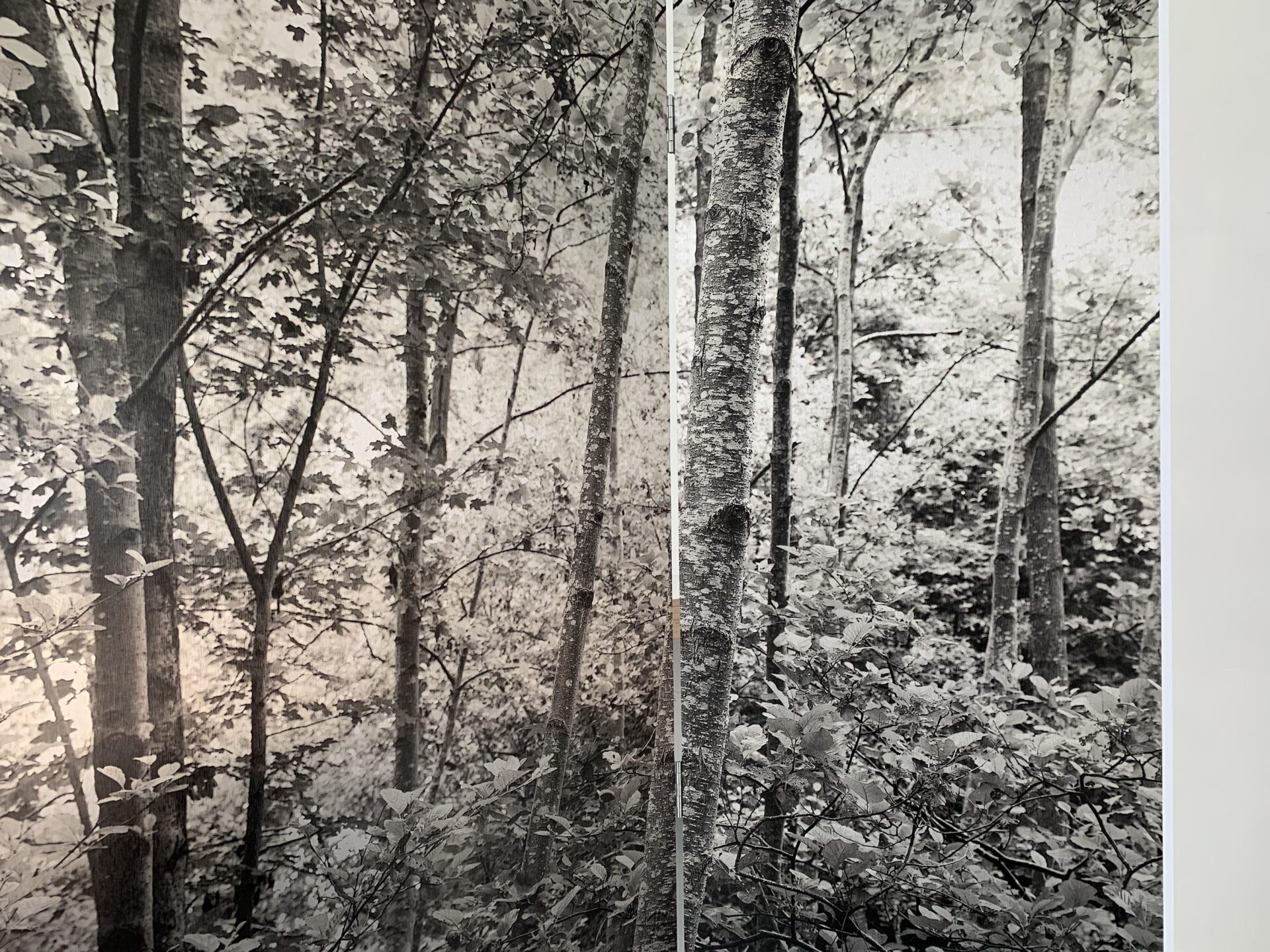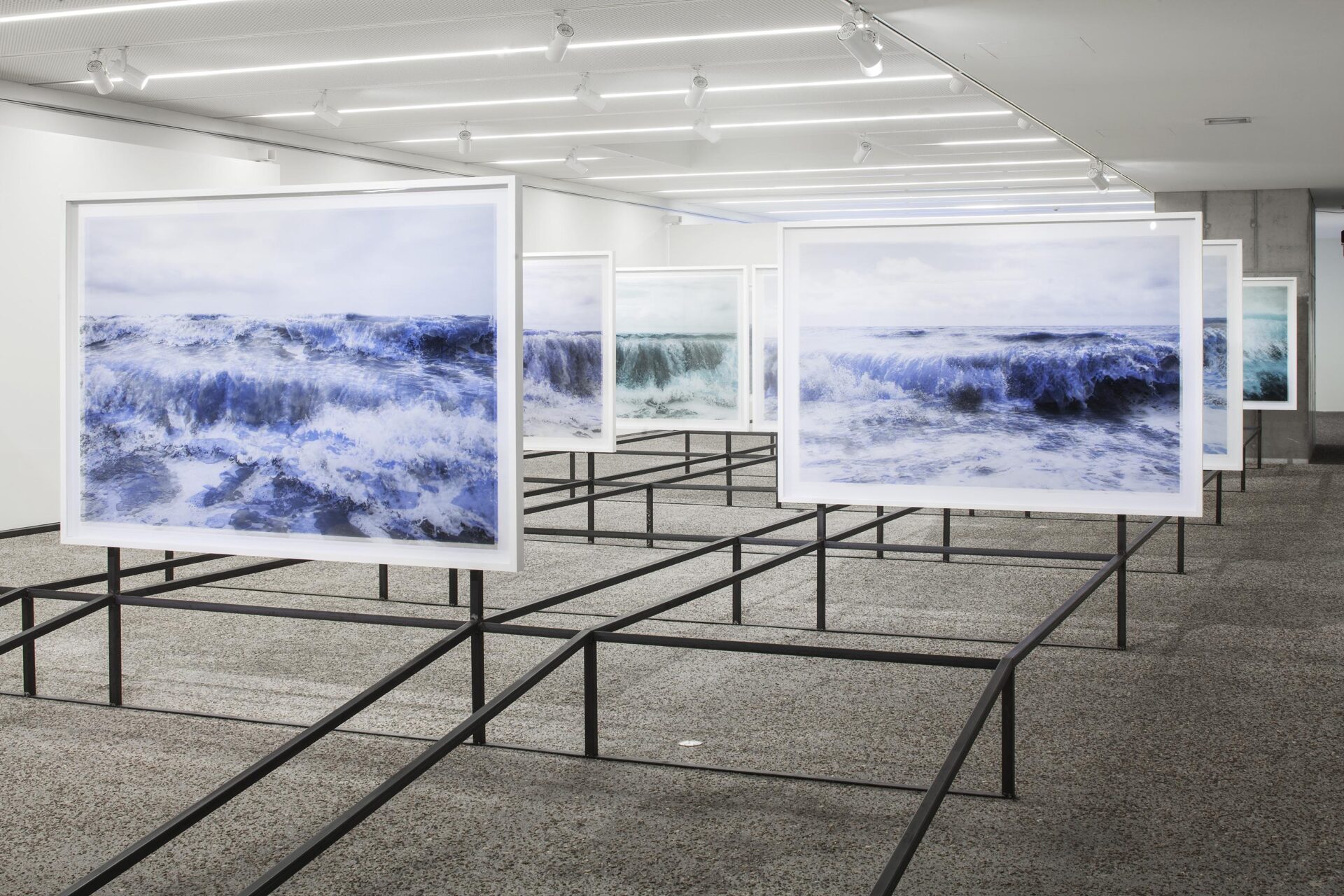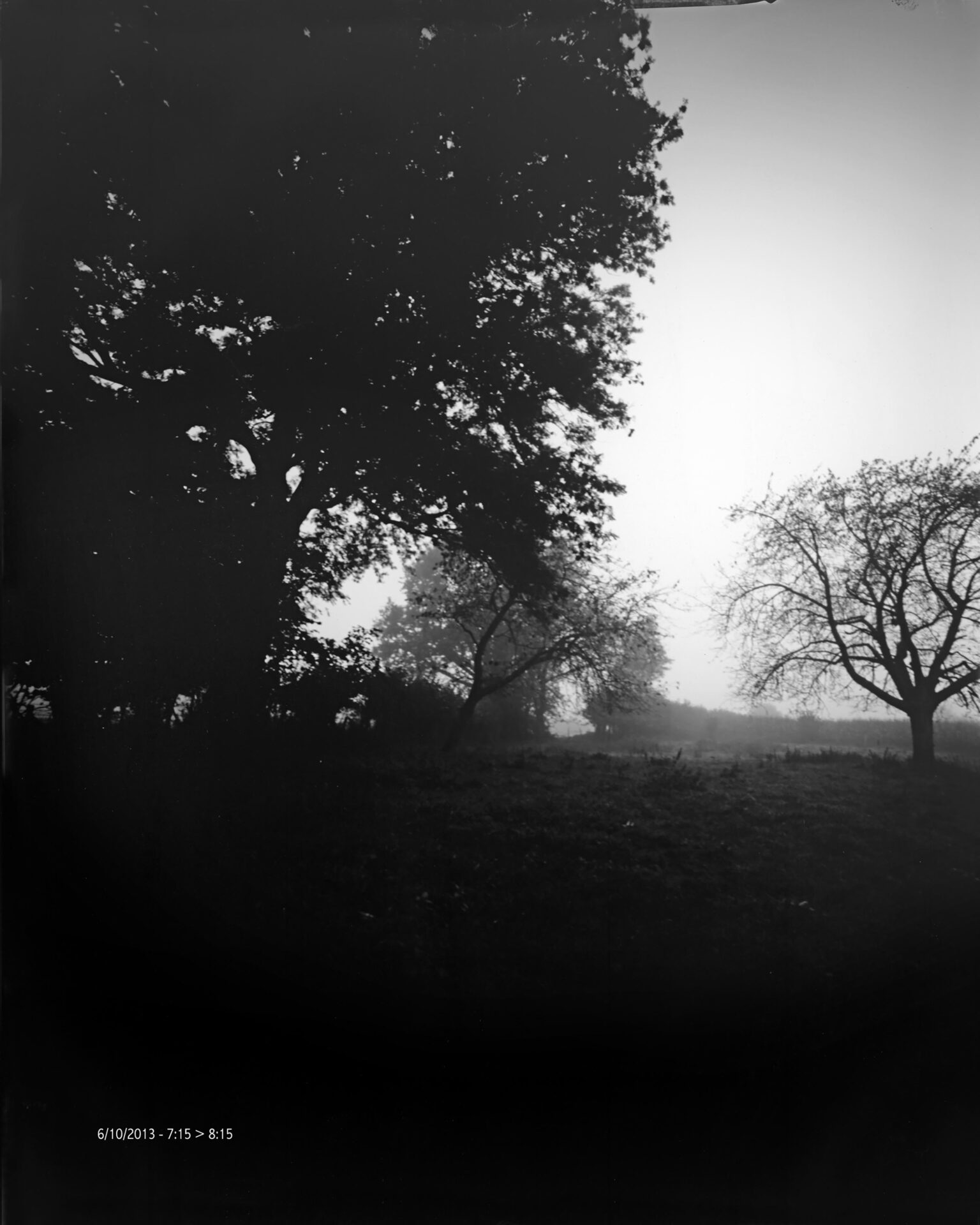



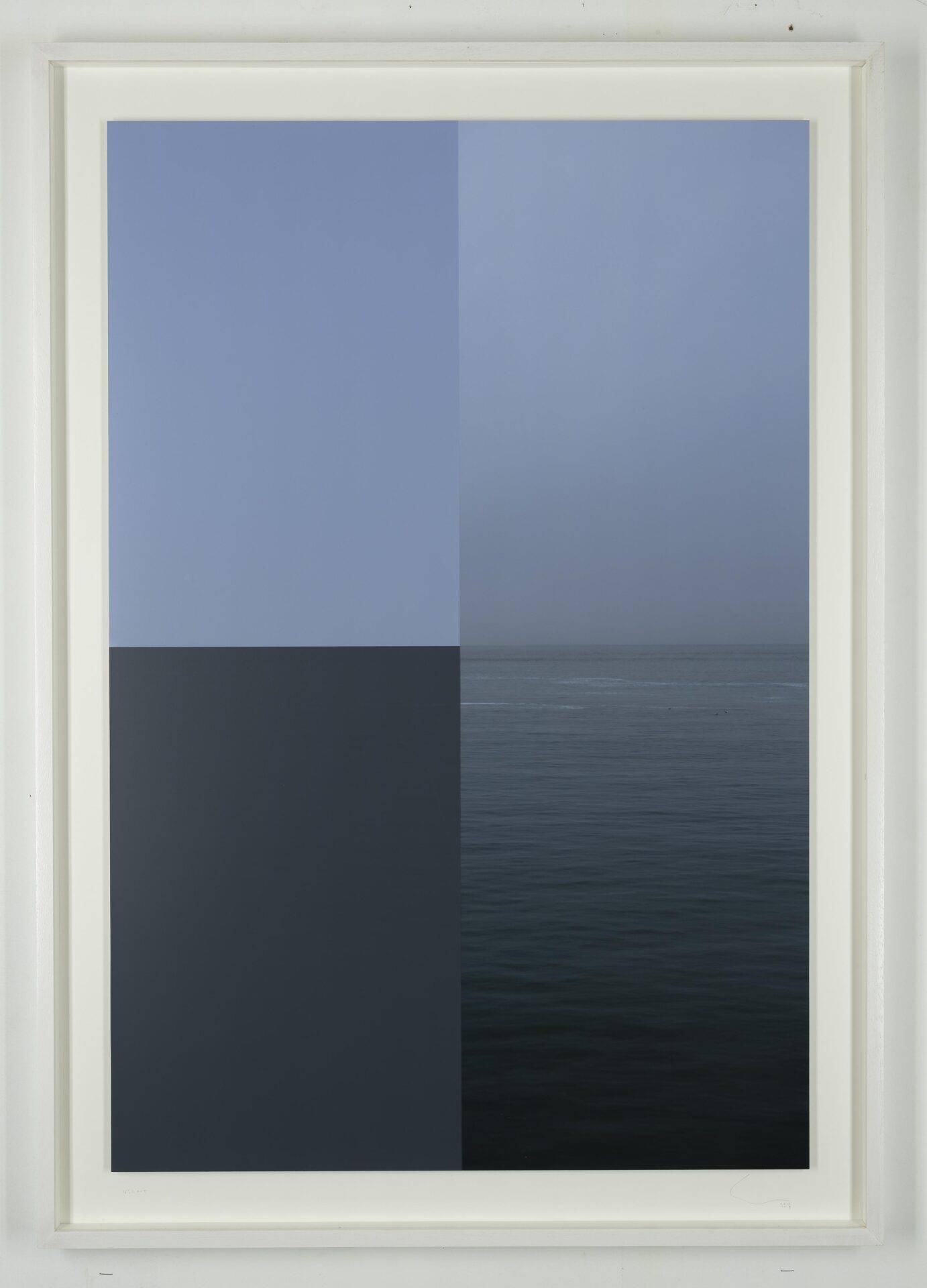




In the “Variations sur les mêmes thèmes” works, Cole uses a limited number of ingredients to create series in which each work is slightly different from the others. On top of a vertical photograph of the sea with the horizon perfectly in the middle, two areas of colour are screen-printed that together make up half of the image. The colours used are the average colours of the sky and the sea. By arranging the surfaces in four different ways, four different compositions are created. The screen-printed areas are printed matt on top of the glossy image.










